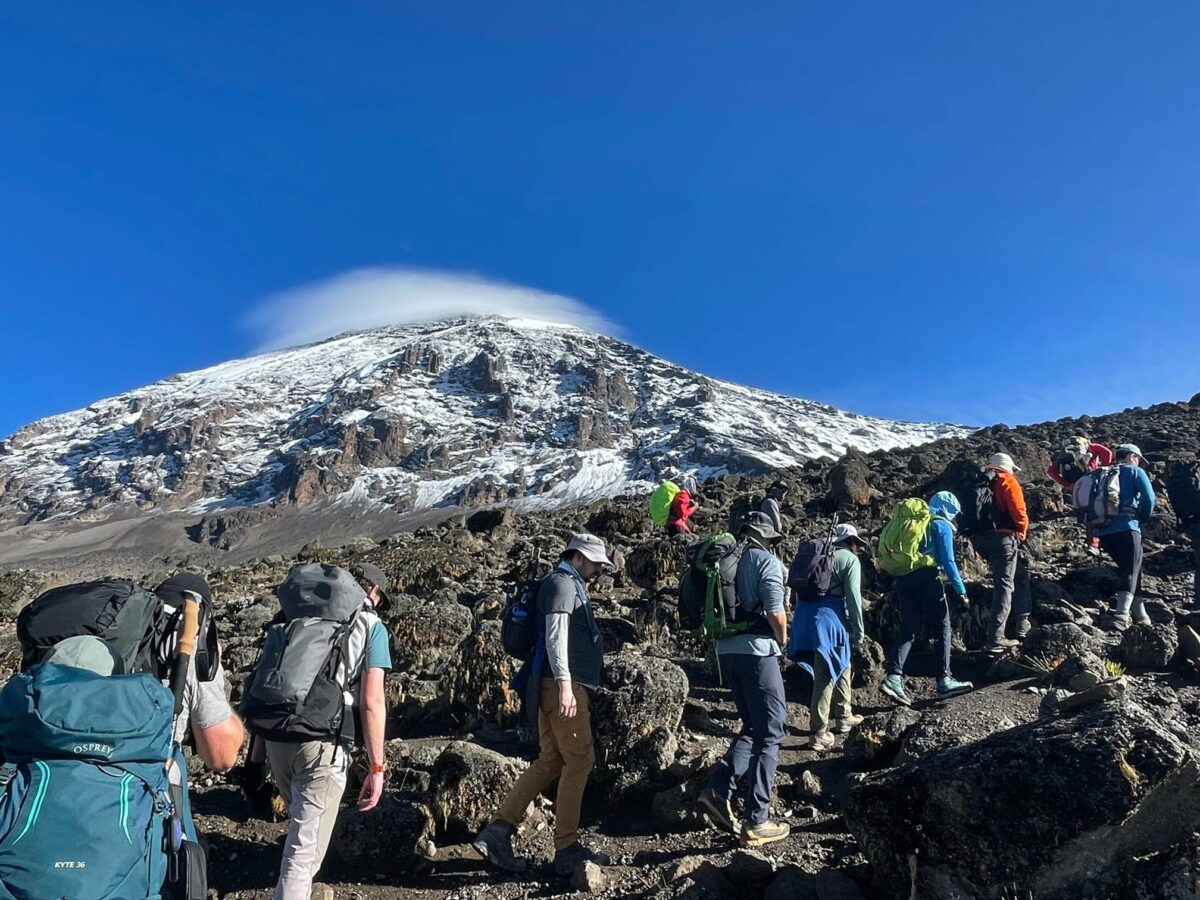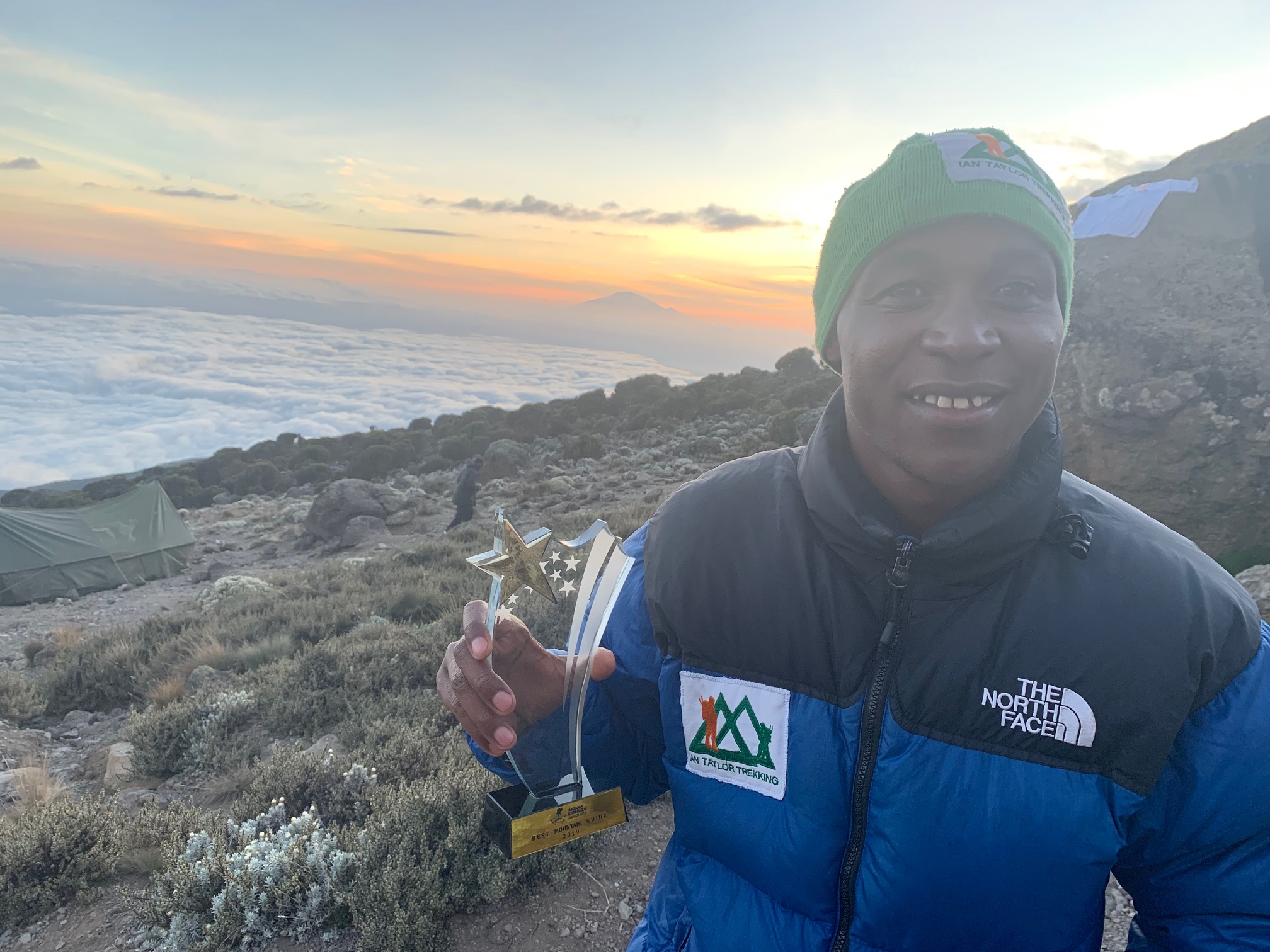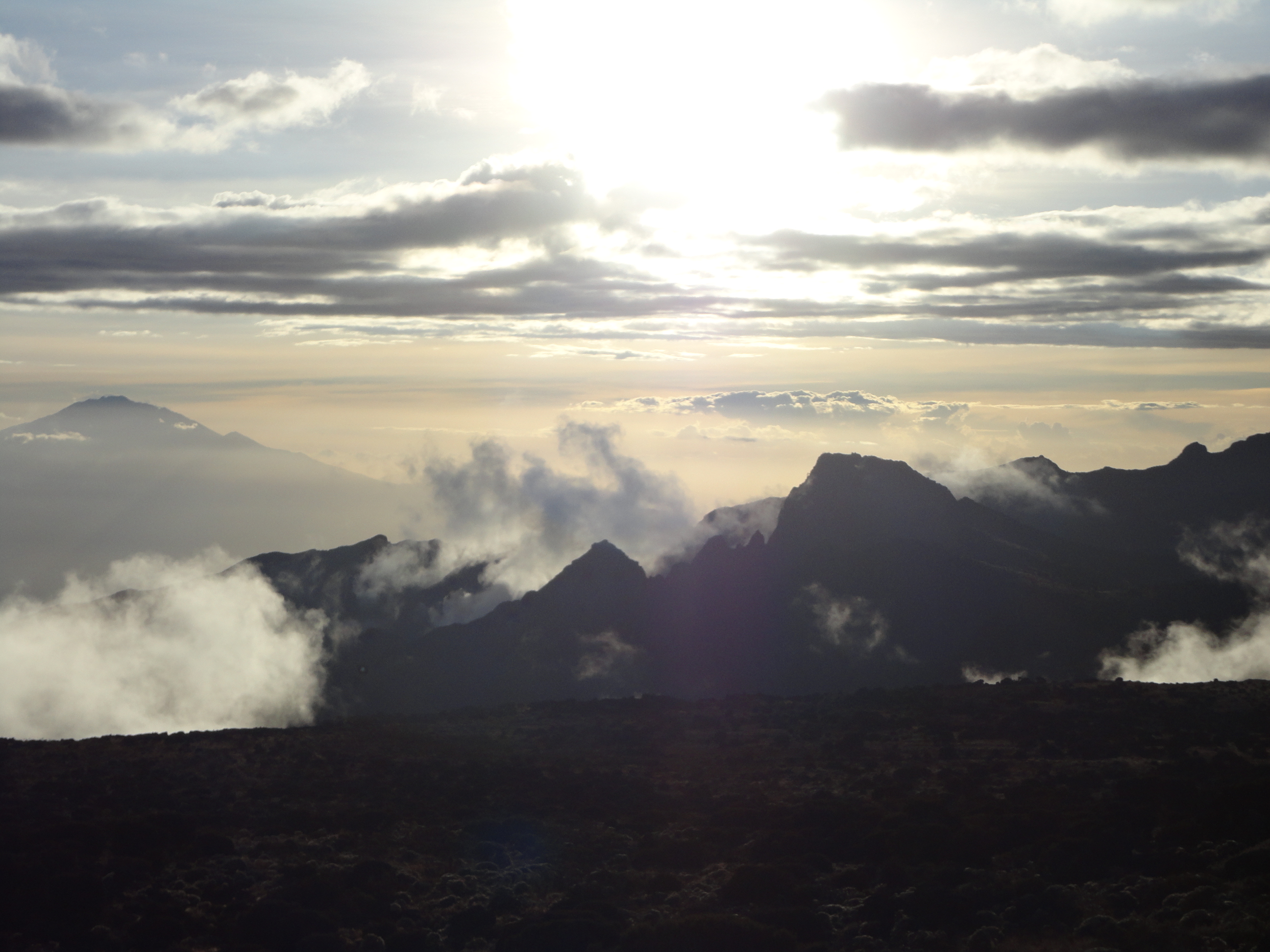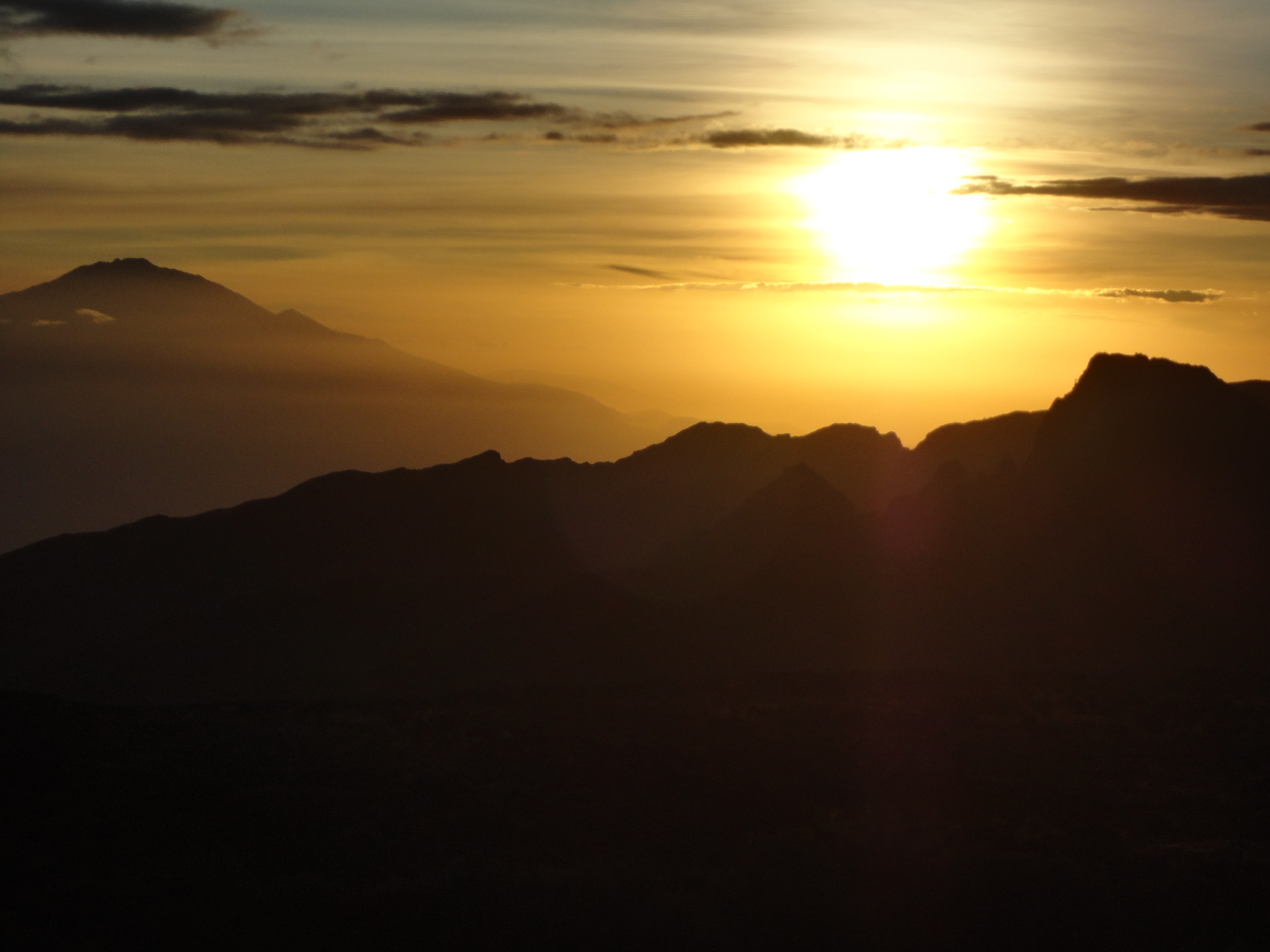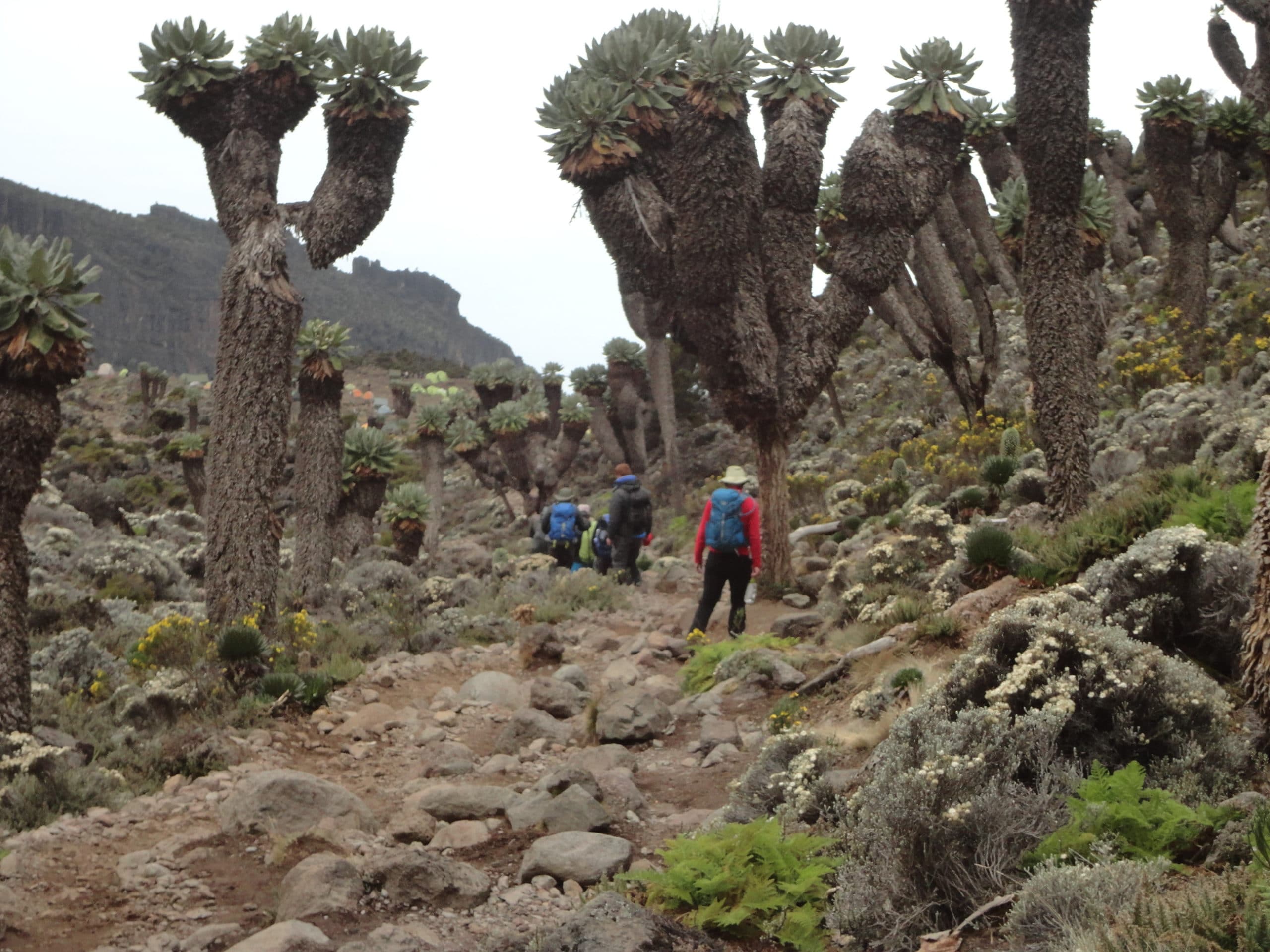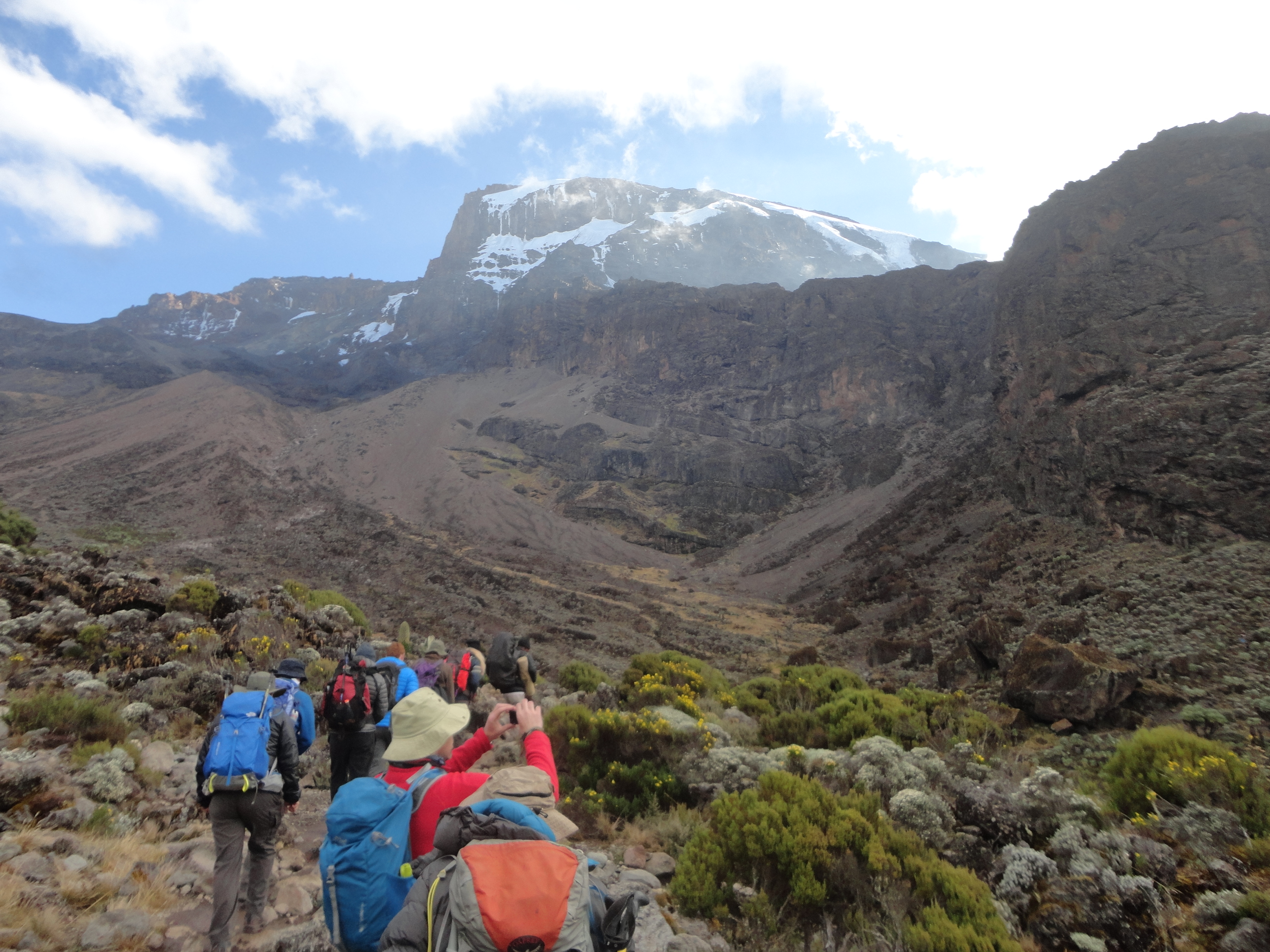The Best Way to Climb Kilimanjaro is on our unique 8 day Lemosho Route itinerary with Kilimanjaro’s Number 1 Guide. If you want to reach your goal and stand on the summit of Mount Kilimanjaro in Tanzania, then this information is what you need to read!
From Ian’s Experience
After climbing Kilimanjaro over 40 times, I can tell you the best way to do it is on the Lemosho Route. We also run the Lemosho Route with a minimum of 8 days on the trail, using Kosovo Camp as our High Camp. We offer a range of dates on the Lemosho Route each year and you can see our upcoming trips HERE.
There are a few main considerations you need to make when you are deciding on choosing a Kilimanjaro climb: what route you take, the itinerary, guide, training and acclimatization. Not all services are the same on the mountain. We manage all our trips with our expert guides. Our head guide was voted the ‘Mountain Guide of the Year’ on Kilimanjaro and he leads up our fantastic team on the ground. Likewise, we have our own office in Arusha and do not outsource any of our trips.
1). Choose the Lemosho Route
There are seven routes up Mount Kilimanjaro. After climbing all of the routes, we think the Lemosho Route is the best and most beautiful route. From the western slopes of Kilimanjaro, you will traverse around to the eastern side of the mountain for your summit attempt. Therefore, you are seeing more of the beautiful mountain than most routes which just go straight up. You will travel through five climatic zones on this route, starting from the rain forest up to the glaciers on the summit. It is a stunning journey on the worlds largest free standing mountain.
The Lemosho Route naturally gives you the best acclimatization of any route on the mountain. The route follows the principals of going to high altitude; climb high, sleep low. Ultimately, the biggest challenge on climbing Kilimanjaro is the high altitude and lack of oxygen. High on the mountain, you will have 50% less oxygen than you do at sea level. Therefore, by having more days, and this type of acclimatization of going higher and sleeping lower each day, you are giving your body the best chance of reaching the summit and getting back down safely. The Lemosho Route is the only route that allows for this.
2). The Best Itinerary for Success
Climbing to the summit of Kilimanjaro is strenuous, challenging and often under estimated by a lot people. You want to give yourself the best chance to safely and successfully reach the summit. All research suggests that spending more time in the lower part of high altitude will give your body the best chance of acclimatizing well to higher altitude later on. Our 8 day itinerary has two nights spent on the Shira Plateau at 3,500m/ 11,500 feet and 3,900m/ 12,795 feet. This sits right in the critical acclimatization phase when going to altitude. The 7 day Machame Route only has one night spent at these heights before jumping up to 4,600m/ 15,091 feet at the Lava Tower. The 8 day itinerary is the best option as it gives you the most time at the lower range of high altitude in preparation for going higher.
Because we use do the eight day itinerary on the mountain, we also have the opportunity to use the high camp of Kosovo. Kosovo Camp will be our launch pad for the summit, weather permitted. The Kosovo Camp is located at 4,900m/ 16,076 feet, which narrows the enormity of the summit day from the normal high camp of Barafu at 4,650m/ 15,255 feet. This gives you a better chance of reaching the summit. On itineraries that have less days, you don’t have the appropriate acclimatization to be able to push up to the higher camp. It would not be safe to do so. Summiting from the Barafu Camp is a greater challenge than going from Kosovo.
3). We Have the Best Guides
First and foremost, our head guide on Kilimanjaro, Athumani, was named Kilimanjaro’s Number One Guide in 2019. Ian and Athumani have been working together for over ten years now. We have helped him grow into the wonderful guide that he has become today. We believe in having smaller groups on the mountain. Therefore, we like to keep our teams at a maximum of 10 trekkers (unless Ian is leading the team). Also, we make sure that each of our teams have more guides than other companies. For our groups of ten trekkers, you would have five guides/assistant guides with you throughout. By having the smaller groups, you have the chance to really get to know the team and learn from them, giving you a richer experience.
Our guides on Kilimanjaro all work directly with Ian Taylor Trekking and we do not outsource our trips. With most of our guides, we have seen them through their development start as porters and work their way up to have more responsibilities and greater roles. We have helped send many of them to school to perfect their English and become guides. We have also helped many of our team buy land and set up businesses. This has helped to support them, their families and communities in leading better lives. The guys that work with us are family, and we want to give them the opportunities they deserve.
4). Climbing to the Summit is Strenuous
We want to make sure that you are coming physically prepared for the journey. We have seen too many people show up to climb Kilimanjaro who have completely underestimated the challenge of reaching the summit and getting back down. The two reasons that people are not successful is because they are not spending enough days on the mountain and the lack of physical preparation.
If you decide to join one of our trips, we are available to help you with your training and preparations. We have the expert advice to help you get the RIGHT type of training you need to be successful. If you want to read more about our specific training for Kilimanjaro, check out our training blog.
When it comes to your specific training, it is not a ‘one size fits all’ approach. This is why we don’t just give out a standard training plan, because there is none! Once you sign up to our trip, we are always available to get on a call to talk about training and preparation. This is one of the most important aspects of your trip. If you don’t come with the right strength and endurance training, then you run the risk of not being successful. Which also will put yourself and others in danger. CONTACT US for more information.
5). Talk to the Experts
After years of experience of doing trips on Kilimanjaro, we have the best itinerary, guides, the best route to Climb Mount Kilimanjaro, acclimatization process and set up on the mountain to give you a safe and successful journey. Trekking to Kilimanjaro can be an incredible experience. This applies to anyone who is willing to take time to learn from our expert knowledge on the mountain. We want you to have a fantastic trip on the mountain, no matter who you go with. So make sure you are putting in the right training and choosing the right team to get you to the Roof of Africa! Follow us on Facebook.
If you want to join one of our climbs on Kilimanjaro, check out our UP COMING TRIPS and GET IN TOUCH today!
There is also option to get this amazing climbing trip to Kilimanjaro for free, check it now how to do it!

